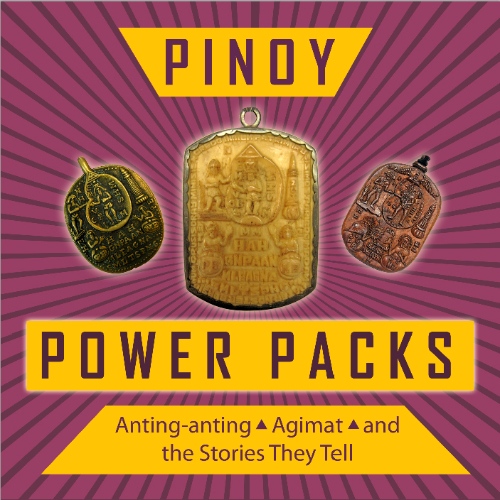Veteran actor Gloria Sevilla is expected to grace the opening of Cinema Rehiyon 7 film festival on August 6, 2015, at the SM City Cebu Cinemas in Cebu City, Cebu. She will be joined by fellow Cebuano actors including Pilar Pilapil, Suzette Ranillo, Julian Daan and Undo Juizan, the first Cebuano FAMAS Best Child Actor awardee (for the film Salingsing sa Kasakit).

A flagship project of the National Commission for Culture and the Arts’ (NCCA) National Committee on Cinema (NCC), headed by filmmaker William Mayo, Cinema Rehiyon is a film festival that features the works of Filipino filmmakers from all over the Philippines, especially outside of Metro Manila, raising awareness on the efforts on and progress of filmmaking in the different regions. Now on its seventh year, Cinema Rehiyon provides a platform for these films, most of which in local languages and showing culturally-rooted narratives, to be exhibited and appreciated by a wider audience, and for the filmmakers to interact with other filmmakers and stakeholders.
Cinema Rehiyon has been a major part of the Philippine Arts Festival, NCCA’s celebration of the National Arts Month every February. The first two years of Cinema Rehiyon was held at the Cultural Center of the Philippines in Pasay City. Since 2011, it was held in different parts of the country—Davao City in 2011; Bacolod City, Negros Occidental, in2012; Los Banos, Laguna, in 2013; and Cagayan de Oro City in 2014.
This year with the theme “At the Crossroads of the Seventh Art,” Cinema Rehiyon will be held in Cebu from August 6 to 9, 2015, highlights Cebuano films, cognizant of the fact that Cebu is the second largest film-producing region in the country after Metro Manila, especially during the 1950s and 1960s.
“Cebu has a unique situation. A local industry sprung from the province around 1932 to 1975. Also, there is a resurgence of a new breed of Cebuano filmmakers,” shares NCC vice head Teddy Co.
The opening film is the classic Cebuano film Badlis sa Kinabuhi, first shown in April 1969. Long thought to be “lost,” Badlis sa Kinabuhi, directed by Leroy Salvador and written by Junipher, stars Gloria Sevilla, Mat Ranillo Jr., Felix De Catalina, Danilo Nuñez, Aurora Villa, Siux Cabase, Frankie Navaja, Jr. and Remedios Atillio Alivio. It won best film at the Filipino Academy of Movie Arts and Sciences (FAMAS) Awards in 1969, and best actress (for Sevilla), best child actor (for Navaja) and best film in black and white at the 1969 Asian Film Festival in Jakarta, Indonesia.
Badlis sa Kinabuhi follows the story of Celia (Sevilla), who is forced to work for his harsh stepfather Simon, when she, her husband Doming (Ranillo) and her young son Lito (Navaja) have fallen into hard times. Rumors begin to circulate that Celia and Simon is having an affair. Simon tries to rape Celia but Lito intervenes. Celia snaps when she sees Simon shoving away her son, and kills him with a bolo. Doming arrives. Seeing Celia naked, he chooses to believe the rumors and banishes Celia. Celia is about to be sentenced in court for the murder of Simon, when Lito, who is unable to speak because of trauma, finally speaks up and recounts the incident. Celia is acquitted and reunited with her husband.
Sevilla, who produced the film with Ranillo, will be given the Hara Humamay Award by the Cebuano Cinema Development Council during Cinema Rehiyon 7. Widely considered as the Queen of Visayan Movies, she, together with Ranillo, has produced and acted together in a number of notable Cebuano films. In 1973, her film Gimingaw Ako (I Miss You) was the first movie from the Philippines to be shown at Moscow International Film Festival in Russia. She won the FAMAS Best Actress award the following year for the movie together with daughter Suzette Ranillo, who won Best Supporting Actress. She received her first FAMAS Award as Best Supporting Actress in the movie Madugong Paghihiganti (1962). FAMAS gave her a Lifetime Achievement Award in 2007. Sevilla is still active in Philippine film and television. Most recently, she won New Wave Best Supporting Actress award at the 40th Metro Manila Film Festival in 2014 for the movie, Mother’s Maiden Name.
On the other hand, Mat Ranillo Jr., known as the King of Visayan Movies, will be honored with the Rajah Humabon Award. A lawyer, Ranillo died in a plane crash in 1969 and was posthumously given an award at the 1969 FAMAS Awards.
Their movie, Badlis sa Kinabuhi joins select regional films, 17 in all, in showings at the SM City Cebu Cinemas, Cine Orientes 1 and 2, and Film and Media Arts Academy (FMA) Mini Theatre. Films are clustered into thematic categories. One example is a category delving on the aftermaths of super typhoon Haiyan or Yolanda, and it includes T.M. Malones’ Dapya Sang Paglaum, Charena Escala and Rowena Sanches’ documentary Nick and Chai, and Thomas Fitzgerald’s Tigdong.
Films focusing on indigenous traditions are also included in the line up. Among them are Nef Luczon’s documentary on the Pan-ay Bukidnon group titled Father Said, “Let’s Return Home”; Lester del Valle’s Walang Rape sa Bontok; Adjani Arumpac’s War is A Tender Thing; and Ivy Universe Baldosa’s Marciano. A notable work is Boyong and Sendong’s Busol: The Last Headhunters, which is regarded to be an “indigenous film,” produced by and for the Cordilleran communities.
Other notable films to be shown are Remton Zuasola’s Soap Opera, which serves as the festival’s pre-opening film; Baby Ruth Villarama’s Little Azkals; Bagane Fiola’s Sonata Maria; John Paul Laxamana’s Magkakabaung; Lemuel Lorca’s Mauban: Ang Resiko; Charliebeb Gohetia’s Chasing the Waves; and Alec Figuracion’s Bitukang Manok, a product of an all-Cebuano crew from the boutique film school International Academy of Film and Television.
Kidlat Tahimik’s Balikbayan #1: Memories of Overdevelopment Redux III closes the festival of the best regional films. Said to be the prominent filmmaker’s tribute to pre-Hispanic Cebuano, the film follows Enrique of Malacca, a Visayan slave brought by Portuguese navigator Ferdinand Magellan considered to be possibly the first man to circumnavigate the world. Tahimik stars as Enrique with George Steinberg, Kawayan de Guia, Wigs Tysman, Katrin de Guia, Kabunyan de Guia and Danny Orquico.
Balikbayan #1 won the Caligari Film Prize at the 65th Berlin International Forum of New Cinema alst February. The work was also screened and well-received in other international festivals such as the Singaporean Biennale and the 39th Hong Kong International Film Festival in April.
Aside from the full-length feature films, there will also be screenings of contemporary Cebuano short films at the FMA Mini Theater, on August 7 and 8, from 1 to 6 PM. There are about 50 titles to be screened including Rommel Ruiz’s “Nangisit nga Darag” (Black Sand) from Cagayan Valley; “Red Lights” by Cebu’s Christian Paulo Lat; and “The End of War” by Ozamis City-based Jo Bacus.
There will also be outreach screenings in select venues, outdoor screenings as well as a special viewing of National Artist Lamberto Avellana’s rarely seen works. Cinema Rehiyon 7 also features fora and discussions on subjects such as “Re-imagining Regional Cinema,” “The Regional as the Other in Cinema,” “Getting the World to See Youth Film” and “Film as Heritage.”
The NCCA is led by its chairman Felipe M. de Leon Jr. and OIC-executive director Adelina M. Suemith. Cinema Rehiyon is made possible by NCC head William Mayo, NCC vice-head Teddy Co, festival director Maria Victoria Beltran and other NCCA-NCC members.
For more details, please contact Ms. Bambi Beltran, Festival Director for Cinema Rehiyon 7, through 09471763343 or email your concerns to bambibeltran@gmail.com or Mr. Rene Napeñas, Head of the Public Affairs and Information Office, through 09285081057, 527-2192 loc 208 or through email address ncca.paio@gmail.com.











